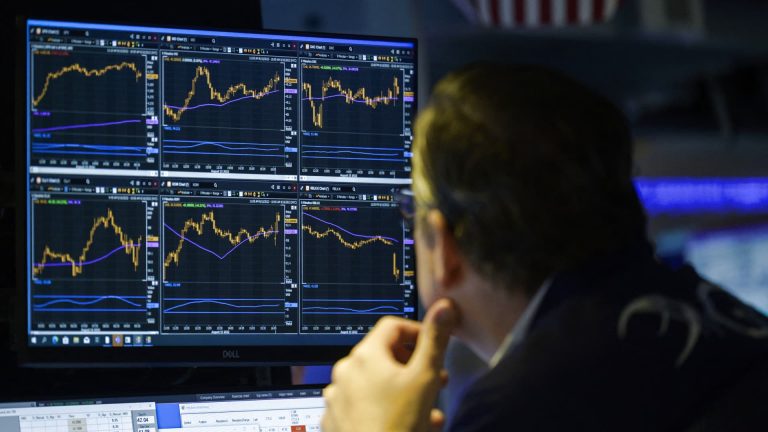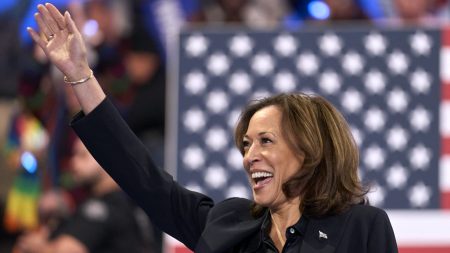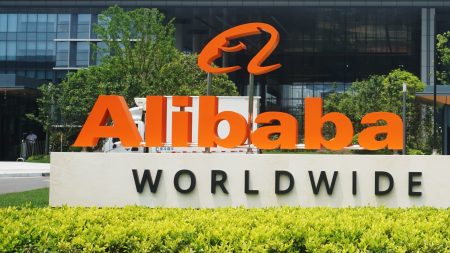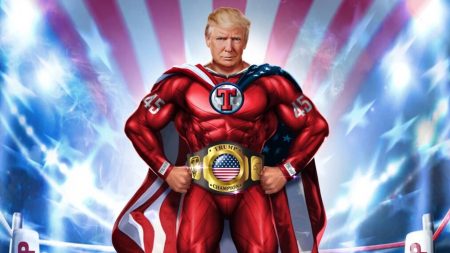Our portfolio experienced a flurry of adjustments in a week dominated by Nvidia’s (NVDA) quarterly results Wednesday evening and Federal Reserve Chairman Jerome Powell’s Jackson Hole address Friday. Here’s a day-by-day look at the trades and price-target changes, and what motivated each decision. Monday Monday proved to be a harbinger for the rest of the week, beginning with purchases of GE Healthcare (GEHC) and Stanley Black & Decker (SWK). With the S & P Short Range Oscillator indicating an oversold market, we looked for places to put our large cash position to work. GE Healthcare and Stanley Black & Decker appeared especially attractive, leading us to buy 100 shares and 150 shares, respectively. For GEHC, we wanted to take advantage of what we believe was an unwarranted decline in the medical technology company’s stock price. By Monday, Stanley Black & Decker shares had given up all of their post-earnings pop Aug. 1 and then some, opening a window for us to build a larger position in the relatively new Club stock . Monday’s SWK buy followed an earlier 150-share purchase on Aug. 8 . Later in the trading day, we seized on Microsoft ‘s (MSFT) post-earnings weakness, buying 30 more shares . Although this trade violated our low cost-basis in Microsoft — a decision we never take lightly — the technology giant’s leadership in the artificial intelligence race is as apparent as ever. And, the recent slide in the stock didn’t reflect that. Our price target on Palo Alto Networks (PANW) got a bump Monday, in response to the cybersecurity firm’s fiscal 2023 fourth-quarter results and investor day Friday night. Despite the release’s unusual timing, the Nikesh Arora-led company once again demonstrated its excellence. We took our PANW price target to $280 per share from $245. That represents more than 20% upside. Tuesday As Jim Cramer likes to say, discipline always wins out over conviction. As stocks moved deeper into oversold territory Tuesday, our discipline had us on the prowl for places to deploy cash. Enter Danaher (DHR), the once-steady life sciences company that’s been mired in a multi-quarter slump amid an inventory glut in its bioprocessing business. However, its second-quarter earnings report in late July hinted that the bottom is forming, and the looming divestiture of its environmental and applied solutions division later this year is an additional positive catalyst. Against this backdrop, we stepped in Tuesday to buy 25 more shares of Danaher. We returned to Stanley Black & Decker later in Tuesday’s session, picking up 100 shares in the DeWalt and Craftsman parent this time around. Tuesday’s purchase followed some encouraging commentary from Lowe’s (LOW), which reported quarterly numbers before the bell. The home-improvement retailer said further growth in the pro-construction market, a key customer for Stanley Black & Decker’s tool business, helped offset some weakness in do-it-yourself, or DIY, customer spending. Wednesday Following our Microsoft move earlier in the week, Wednesday saw us target another Big Tech stalwart in Amazon (AMZN). And, for the first time since late May, we added to our holdings in Starbucks (SBUX). These purchases came as the market remained at oversold levels. However, Foot Locker ‘s (FL) before-the-bell earnings report represented a low point for the week. The 50 shares of Amazon bought boosted our position in a stock we believe has ample room to run as topline growth at the company’s cloud-computing division reignites and the e-commerce business turns the corner on profitability. Earlier in August, we hiked our Amazon price target to $160, implying about 20% upside. Our purchase of Starbucks represents another buying-into-post-earnings-weakness situation, as we did with Microsoft and Stanley Black & Decker earlier in the week. While the 50-share buy violated our cost basis, the long-term prospects for the coffee chain still appear bright. And, with the stock at its lowest point since November 2022, we felt that exceeding our cost basis to expand exposure was justifiable. Foot Locker’s horribly quarterly report — combined with its dividend suspension — left us no choice but to move to the sidelines with a 4 rating and remove our price target on the stock. Our 4 rating indicates that we will take no action on the stock until we get more information. We always knew turnaround stories don’t get written overnight, but the chapters ahead for the sneaker retailer look more treacherous than initially understood. Thursday Chips occupied the Club’s spotlight Thursday, as semiconductor maker Broadcom (AVGO) joined the portfolio, and we telegraphed our intention to exit Advanced Micro Devices (AMD) when trading restrictions are lifted. We also ratcheted up our Nvidia (NVDA) price target following another home-run earnings report and current-quarter guide. Broadcom’s addition — at a small, 1% weighting to start — brings another layer of AI exposure to Jim’s Charitable Trust. The company’s latest networking chip, known as Jericho3-AI, can sow together tens of thousands of graphics processing units (GPUs) in data centers to meet the performance requirements of complex AI workloads. Broadcom reports next Thursday, Aug. 31, so we don’t have to wait long for updates on Jericho3-AI’s reception and its overall outlook. In conjunction with the Broadcom initiation, we downgraded AMD to a 3 rating, and we’ll look to exit our position when we’re able. Broadcom stands to gain from a different part of the AI boom than AMD, which competes directly with Nvidia on the processing side. Nvidia’s fiscal 2024 second-quarter results released late Wednesday underscored its dominance in that market. That’s why on Thursday we took our Nvidia price target to $600 per share from $450, implying roughly 27% upside. As Wall Street’s earnings estimates were revised sharply higher, Nvidia shares got cheaper on a valuation basis Thursday while its AI leadership grew more apparent. While down sharply Friday, Nvidia shares have still more than tripled in 2023. (Jim Cramer’s Charitable Trust is long GEHC, SWK, MSFT, AMZN, NVDA, AMD, AVGO, SBUX, DHR and PANW. See here for a full list of the stocks.) As a subscriber to the CNBC Investing Club with Jim Cramer, you will receive a trade alert before Jim makes a trade. Jim waits 45 minutes after sending a trade alert before buying or selling a stock in his charitable trust’s portfolio. If Jim has talked about a stock on CNBC TV, he waits 72 hours after issuing the trade alert before executing the trade. THE ABOVE INVESTING CLUB INFORMATION IS SUBJECT TO OUR TERMS AND CONDITIONS AND PRIVACY POLICY , TOGETHER WITH OUR DISCLAIMER . NO FIDUCIARY OBLIGATION OR DUTY EXISTS, OR IS CREATED, BY VIRTUE OF YOUR RECEIPT OF ANY INFORMATION PROVIDED IN CONNECTION WITH THE INVESTING CLUB. NO SPECIFIC OUTCOME OR PROFIT IS GUARANTEED.
Our portfolio experienced a flurry of adjustments in a week dominated by Nvidia’s (NVDA) quarterly results Wednesday evening and Federal Reserve Chairman Jerome Powell’s Jackson Hole address Friday.
Here’s a day-by-day look at the trades and price-target changes, and what motivated each decision.
Read the full article here









